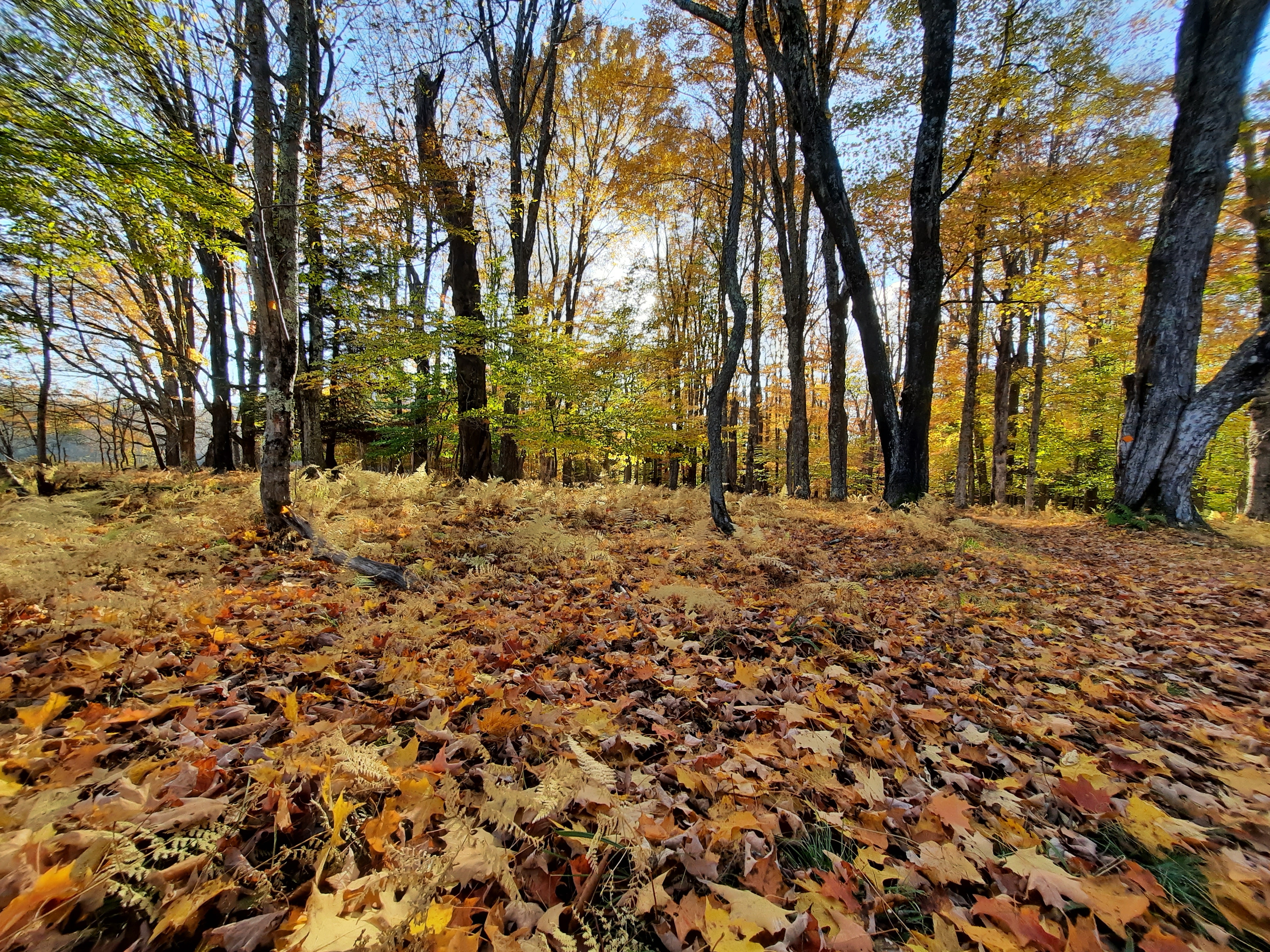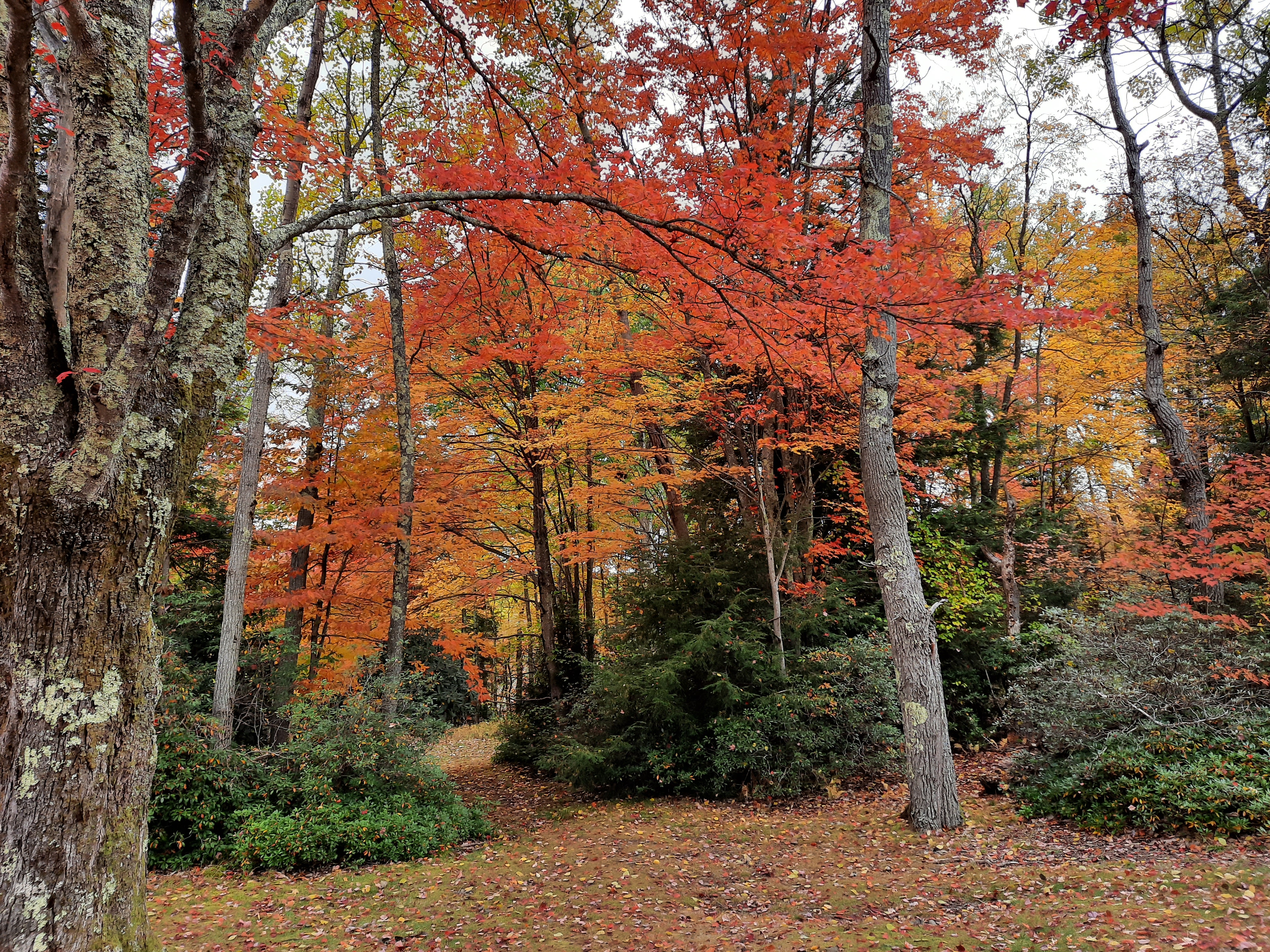In 2012, my wife and I spent our anniversary exploring a corner of the Eastern U.S. that we’d never visited before. We found it so delightful that we hoped to return soon. A few years (and a couple of kids) later we were able to return this month with the whole family to Tucker County, West Virginia.
I’m sure this place is beautiful in other seasons, but having only ever visited in October, I can confirm that it is positively magical then. The quality and quantity of fall foliage is blinding—thick forests of maple, birch, and aspen punctuated with the deep green of spruces and firs, or open plains of knee-high blueberry bushes, each outstretched leaf turned to a crimson candle in the setting sunlight.
This time around, because we had a toddler with us, the hiking was limited in both speed and distance, but we still spent plenty of time outside. A few of our favorite spots are listed below.
Canaan Valley State Park and National Wildlife Refuge
This is where we landed when we first visited the area, and we were still taken by it this year. Canaan Valley is a geological curiosity, a nearly perfectly flat depression (give-or-take, 8 miles long by 3 miles wide) on top of a high plateau. Given this, the valley floor is still over 3,000 feet above sea level, which, coupled with its location at nearly 40° north latitude creates a biome more akin to Minnesota than the Mid-Atlantic. Its flat topography lends itself to swampy terrain, with numerous ponds, sphagnum bogs, and tall-grass wetlands lining the meandering headwaters of the Blackwater River.
The state park has a fine network of trails (and cabins and a nice hotel, to boot) along the river and into the hills on the west side of the valley. In the southeast corner of the valley, the park also operates a small ski resort with a respectable 1,000 ft. vertical drop and an average of 200+ inches of natural snow each winter. If you’re there in October, you can ride the chairlift (which we did) to look at the leaves and enjoy great views of the valley.
Much of the remainder of the valley, apart from one other privately owned ski resort and scattered houses and farms, is occupied by a national wildlife refuge, preserving the boggy wetlands for migrating waterfowl. There is an excellent boardwalk for birdwatching in the heart of the refuge, circling through a fir forest, meadows of cotton grass and swampy tangles of wild spiraea. Quiet gravel roads snake through the refuge into Monongahela National Forest, with opportunities for hiking, wild cranberry picking, camping, or just country driving.







Blackwater Falls State Park
If you follow the Blackwater River to the northwestern end of the valley, it drops over a lovely 50′ waterfall and then dives into a canyon on its way down to the Monongahela River basin. The spectacle of fall foliage in the canyon rivals any show I’ve ever seen anywhere (and, seeing as our anniversary is in October, we’ve witnessed peak fall color in quite a few parts of the country over the years). You just want to sit and soak it in for hours.
We didn’t do any real hiking here this time around, though there are plenty of trails. The kids found some trees to climb and made leaf piles to jump in and throw at one another, and we enjoyed the (rather crowded) walk down to the falls.




Dolly Sods Wilderness and Bear Rocks Preserve
The thing that drew us to WV in the first place was Dolly Sods, which I’d read about on other hiking blogs—a place of mystery (including unexploded WWII training bombs!) above the clouds, a vast plain where the virgin forest was clearcut and fires seared the soil so that the trees may never return fully. Whatever the origins, the current state of the place is sheer, inexpressible beauty.
We only had a fleeting moment to visit this time (due to a sewage issue that forced us out of our AirBNB and cut the trip short, another story altogether—par for the course on our family vacations!), but happened to be there near sunset. All I can say is that the pictures speak for themselves. For someplace so close to civilization (ca. 2.5 hours from Washington, D.C.), it is as otherworldly as any spot this side of the Rockies. There are dozens of miles of trails zigzagging the wilderness, some of which we hiked last time, but we took a toddler-paced, restful amble this time.




Seneca Rocks
The only spot we hit on this trip that we didn’t last time was Seneca Rocks, a tourist photo-op standby and rock climbing Mecca. We managed to hike to the observation platform (a steep trail gaining 600+ feet in 1.3 miles) with the whole family, and then the older two girls coaxed me up to the knife-edge ridge for a better view and a dose of adrenaline. Well worth the visit.


We’ll be back again sometime, I’m sure. I’ll leave you with one obligatory New River Gorge Bridge shot to invite you to try it out as well. This is a state hard hit by centuries of environmental destruction and decades of economic devastation (it’s the only state in the U.S. with fewer people than it had in 1950), but there is a wealth of beauty and sparks of resilient community around the state. We’ve grown to love it, and hope others will, too.
